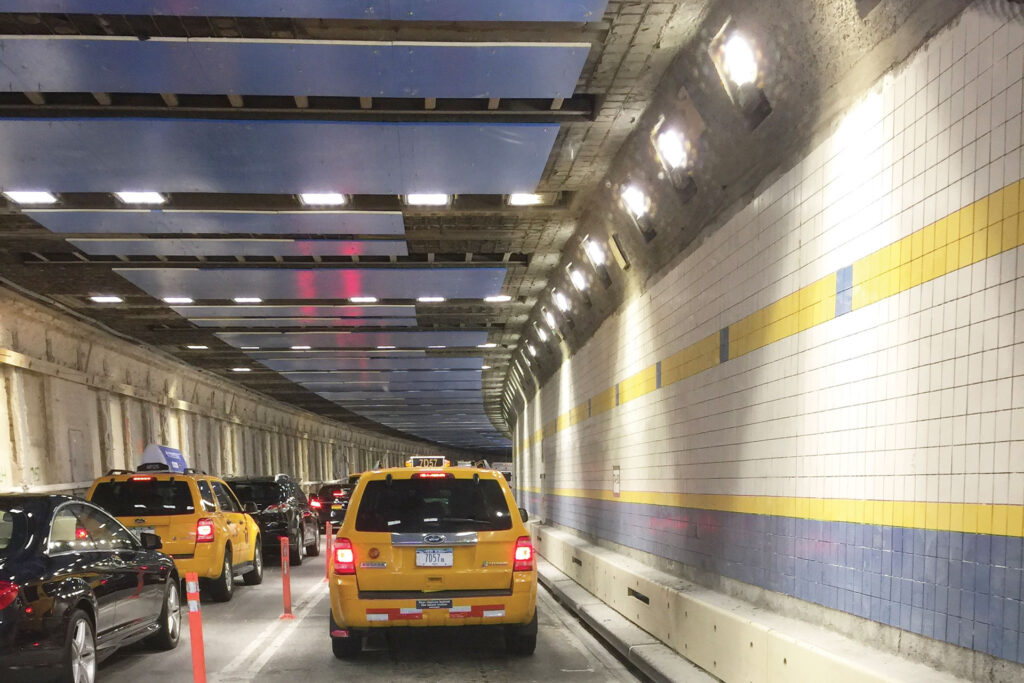queens midtown tunne: The Queens Midtown Tunnel is a critical piece of New York City’s transportation infrastructure, connecting the borough of Queens to Manhattan. Operated by the Triborough Bridge and Tunnel Authority (TBTA), a division of the Metropolitan Transportation Authority (MTA), this tunnel is one of the busiest vehicular routes in the city, serving tens of thousands of commuters and travelers daily.

History and Construction
The idea for the Queens Midtown Tunnel was conceived in the early 20th century as a means to alleviate traffic congestion and provide a more direct connection between Queens and Manhattan. Construction began in 1936, under the supervision of Robert Moses, a key figure in New York City’s development and infrastructure projects.
Despite challenges such as engineering complexities and the financial constraints of the Great Depression, the tunnel was completed in 1940 and officially opened to traffic on November 15 of that year.
At the time of its construction, the Queens Midtown Tunnel was a remarkable engineering feat. It was the first major tunnel to be constructed using prefabricated steel sections that were sunk into a trench dug along the riverbed of the East River.
The tunnel consists of two tubes, each carrying two lanes of traffic. It stretches approximately 6,414 feet (about 1.2 miles) beneath the East River.
Design and Features
The Queens Midtown Tunnel features a state-of-the-art ventilation system, which was cutting-edge at the time of its construction. The system operates through four ventilation buildings, two on each side of the tunnel, which circulate fresh air throughout the tunnel to ensure the safety of motorists.
This was particularly important in the early days of the tunnel, when vehicle emissions were less regulated.
The tunnel is also equipped with a series of pumps to prevent flooding, especially during storms or high tides. Due to its position beneath the East River, maintaining the structural integrity and preventing water ingress has always been a priority for the tunnel’s operators.
Traffic and Tolling
Today, the Queens Midtown Tunnel is a vital artery for New York City’s traffic flow. It serves both commuters traveling between Queens and Manhattan and long-distance travelers heading to other parts of New York City and beyond.
The tunnel is a key connector for drivers using the Long Island Expressway (I-495), which leads to Long Island, and it feeds into the major avenues and streets of Midtown Manhattan.
To manage the high volume of traffic, the MTA implemented an electronic tolling system, known as E-ZPass, to streamline the toll collection process and reduce congestion at the tunnel’s entrances and exits.
This system allows drivers to pay tolls automatically, without stopping at a toll booth. In addition, the MTA introduced open-road tolling in 2017, further improving traffic flow by eliminating the need for toll plazas entirely.
Recent Developments and Maintenance
Maintaining the Queens Midtown Tunnel is an ongoing challenge due to its age and heavy usage. In recent years, the MTA has undertaken several major renovation projects to upgrade the tunnel’s infrastructure and ensure its safety and efficiency.
This has included repairs to the tunnel’s electrical and lighting systems, the installation of new fire suppression equipment, and the reinforcement of the tunnel’s structural components.
One of the most significant recent challenges faced by the Queens Midtown Tunnel was the damage caused by Hurricane Sandy in 2012. The storm surge from the hurricane flooded the tunnel with millions of gallons of saltwater, causing extensive damage to its electrical systems, walls, and roadways.
Following the storm, the tunnel underwent a multi-year, multi-million-dollar rehabilitation project to repair the damage and enhance its resilience against future flooding events.
Importance to New York City
The Queens Midtown Tunnel plays an essential role in New York City’s economy and daily life. As one of the primary routes for motorists traveling between Queens and Manhattan, it helps to facilitate the movement of goods, services, and people across the city.
It also provides a critical alternative to the other East River crossings, such as the Queensboro Bridge, the Williamsburg Bridge, and the Brooklyn Battery Tunnel.
